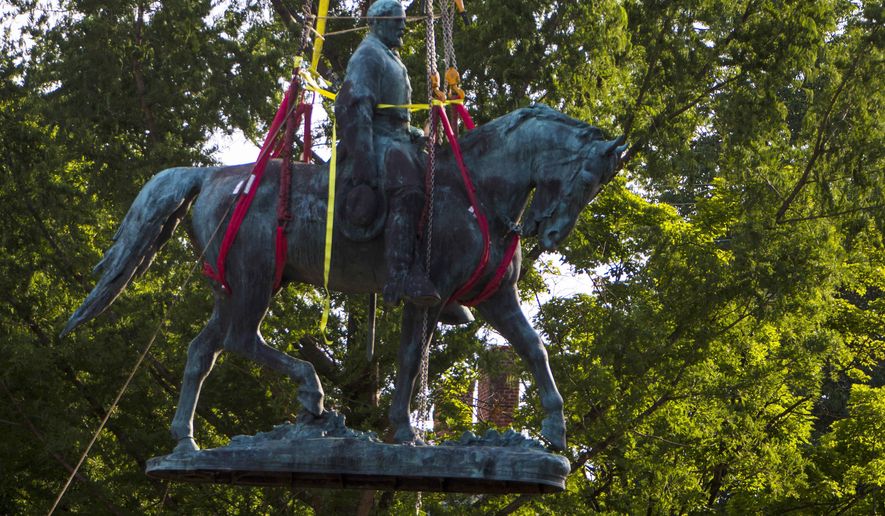Four summers after White nationalists and neo-Nazis, carrying tiki torches and chanting ‘the Jews will not replace us,’ marched on Charlottesville, the Confederate statues that the White supremacists sought to defend were quietly removed.
On a Saturday in July, in front of a small, supportive crowd, workers used a crane to remove the statues of Generals Robert E. Lee and Stonewall Jackson, a scene dramatically different than the one that unfolded on Aug. 12, 2017. On that day, a ‘”Unite the Right” rally sparked violent clashes with counter-protesters, and Heather Heyer, 32, was killed when a White nationalist deliberately plowed a car into a crowd.
The tragedy was punctuated by equivocating remarks by then-President Donald Trump. Although he condemned the violence, Mr. Trump caused an outrage by saying there were “very fine people, on both sides.”
It was a defining moment of his early presidency, a source of deepening political division and racial awareness in a nation yet to fully reckon with the legacy of the Civil War and slavery. And Mr. Trump’s response is said to have inspired Joseph R. Biden to run for president on a vow to “reclaim the soul of America.” On the fourth anniversary of the “Unite the Right” rally, Mr. Biden said domestic terrorism rooted in White supremacy is the “most lethal terrorist threat to our homeland.”
But on July 10 there were no Confederate flags or swastikas on display in Charlottesville. Instead, city leaders claimed a small victory over racism.
“As we debate in America whether critical race theory, actual history, can be taught, our community battles with the falsities that were created to enshrine and preserve whiteness as supreme,” said Charlottesville Mayor Nikuyah Walker at a news conference moments before the statues were removed.
“Taking down this statue is one small step closer to the goal of helping Charlottesville, Virginia, and America grapple with its sin of being willing to destroy Black people,” the mayor said. “We are so far from the perfect union, yet one step closer today as these two statues come down.”
Is the nation healing? Did taking down two statues represent progress?
These and other questions are the subject of this episode of History As It Happens. The relevance of the statues’ origins is also discussed, because the monuments to Lee and Jackson were not erected in the immediate aftermath of the Civil War. They were put up in the 1920s and celebrated by the Ku Klux Klan.
“It’s a sign of progress if you have a very low bar as to what progress is, and on these sorts of issues for much of American history there was a very low bar for what constituted progress,” said James Grossman, the executive director of the American Historical Association.
“Taking down statues does not necessarily mean changing structures, changing laws, attitudes, and institutions, and one of the fears that I and many other people have is that taking down statues might be seen as enough,” Mr. Grossman said.
Still, the peaceful removal was an important moment, especially when considering the violence that marred Charlottesville four years earlier. It served as an opportunity to educate the public about the statues’ history — a history that has little to do with the Civil War.
The statue of Stonewall Jackson was unveiled in 1921, Robert E. Lee in 1924. That is more than a half century after the end of the Civil War and about 40 years after the end of Reconstruction, which saw the reimposition of White supremacy in the states of the old Confederacy.
“That’s the hint that this is not really about the Civil War,” Mr. Grossman said. “This is not about the heroism of Confederate generals. This is really about legitimating and perpetuating ideas and structures of race that in the 1920s had burrowed themselves into Southern culture.”
Listen to the entire discussion with historian James Grossman by downloading this episode of History As It Happens.




